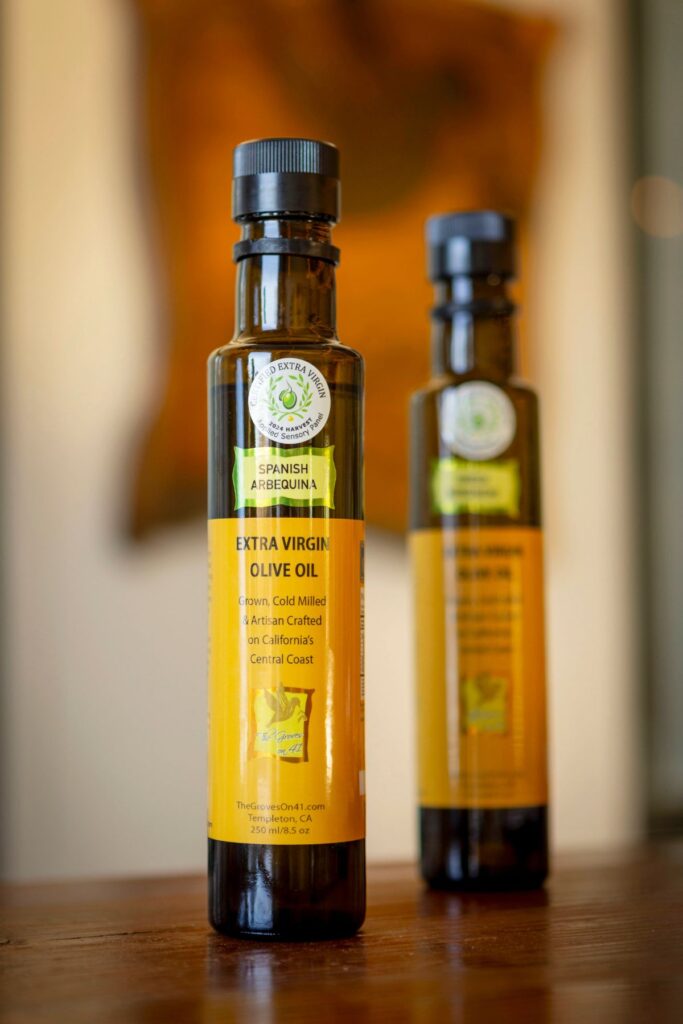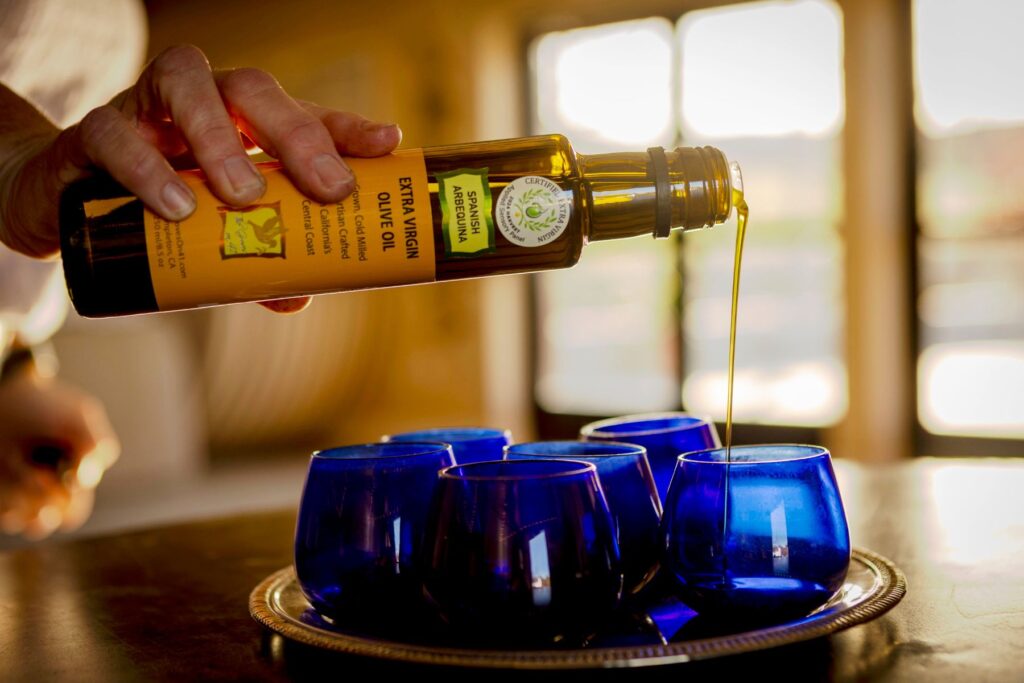
Paso Robles Olive Oil Sommelier Talks Tasting and Pairing
Story by Katy Budge
Photography by Gennan Shippen
San Luis Obispo County is known for producing stellar wine grapes, but another local fruit is gaining attention as well — olives, specifically those grown for high-quality, extra virgin olive oil. And thankfully, given the county’s ongoing challenge with adequate rainfall, olives are remarkably efficient when it comes to water use.
“The Central Coast’s climate is perfect for olive cultivation,” shares Gail Todaro, a level two Olive Oil Sommelier and Owner of Gail Todaro: OliveWorks. She founded the educational company to help consumers become savvier about first-rate olive oils, especially ones originating from their own backyard. “Our local olive oil producers are internationally recognized for quality and winning prestigious awards,” Gail says.
Two of them are The Groves on 41 in Templeton, and Lone Oak Olive Oil near Arroyo Grande. Both are small, family-owned and focused on high-quality, extra virgin olive oils known as finishing oils. Compelling flavor components unto themselves, these oils are used for amplifying flavor in everything from a sizzling steak to vanilla ice cream.
Different Climates, Similar Tools
Karen Tallent and her daughter, Jennifer, are Co-owners of The Groves on 41. Their 10-acre parcel is planted with Spanish Arbequina and Greek Koroneiki trees, varietals that do well in the often scorching North County heat.
Jennifer notes that, thanks to their relatively small operation, “We’re able to do a lot of hands-on soil moisture metering, which really helps us keep a close eye on our water use.” This is a valuable monitoring technique that Lone Oak uses as well.
Depending on rainfall, the Tallents might start their once-a-week watering in late spring, then stop about two to three weeks before the fall harvest “so the roots have to search for water,” Karen explains. If the trees “get lazy” from overwatering, the fruit ends up being rather meh. “You want a high oil content to get higher polyphenols,” she elaborates.
Polyphenols are naturally occurring compounds found in many foods. In olive oil, they define taste and texture, so the more polyphenols, the better the oil. As Gail notes, “The main characteristics to consider when choosing high-quality extra virgin olive oil are fruitiness, bitterness, pungency and balance.”
Philip Langston, Co-owner of Lone Oak Olive Oil with his wife, Nancy, follows the same pre-harvest procedure with the couple’s six acres of Tuscan varieties: Leccino, frantoio, pendolino, Taggiasca and Maurino. “We did experimental planting with about nine different varieties,” he says. “Those five gave us the flavor profiles we wanted, and they do well with the cool summers and warm winters that we have in our coastal Mediterranean climate.”
In addition to developing better flavor in the oil, Philip adds that allowing the trees to “dry out” before harvest also provides better yields. Part of milling olives into oil involves centrifugation, a process in which excess liquid gets extracted from the fruit. Less water in the olives to start with simply means more oil.
After harvest, both operations water their trees briefly so they get a bit of TLC, but irrigation is usually halted soon after unless frost threatens. “Olives don’t go as dormant as something like grapevines,” Karen explains. “They still have leaves on them, so sometimes you need to irrigate a bit during frost events to keep the water flowing through the trees.”
Frost isn’t much of an issue where Lone Oak’s trees are, but water always is. “We just don’t have a lot of access to it,” Philip says. One way he gets the most out of every drop is by composting.
“We make our own compost on the ranch, and compost a lot in the fall and spring to retain as much moisture in the soil as possible,” he notes. The Groves on 41 takes a similar approach; after the trees are pruned in advance of the spring bloom, all the clippings are left in the rows to decompose and release their nutrients into the soil. “It’s a natural nitrogen boost for the trees,” Karen says.
Essentially Organic
Using natural approaches fits in with the overall ethos of both The Groves on 41 and Lone Oak Olive Oil. Though neither is certified organic, they essentially farm as such.
“Chemicals are expensive, and they just aren’t needed as the trees mature with sensible controls in place,” Karen explains. “I think most California farmers just want to do the best they can for their environment. We certainly do.”
“We farm the way we do for love of the land, the trees and the animals — from insects and birds to fur creatures that live on this planet,” Nancy says. “Someone has to think of the future, and if we only have this tiny golden bubble [as I see the farm] to save from harm, then that’s what we do. We care for it with our hearts and with our love.”

What is an Olive Oil Sommelier?
Many of us are familiar with wine sommeliers, who can advise on wine choices and pairings. But olive oil sommeliers are lesser-known expert tasters. Gail Todaro completed the weeklong oil Sommelier Certification Program through the Olive Oil Times Education Lab, which hosts a series of programs in New York and London.
“The program offers an opportunity to learn from and interact with world-class specialists, and network with students from diverse, geographic and professional backgrounds,” says Gail. “It’s a hands-on program focusing on quality standards through intensive training on recognizing olive oil defects and sensory attributes through taste and smell. It also includes in-depth information on production methods, olive cultivars, health benefits, culinary applications and sustainability.”
There are two levels of olive oil sommelier. As for what this expert does, their work is similar to that of their wine industry counterpart. “Both olive oil sommeliers and wine sommeliers analyze aromas and flavors, and the main difference is their use of unique vocabulary,” says Gail.




